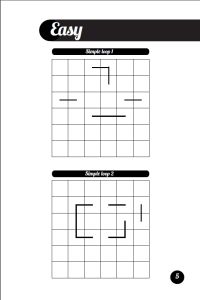
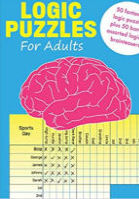
Logic Puzzles for Adults |
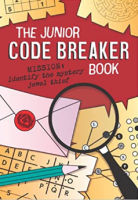
Junior Codes Book |
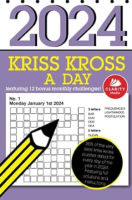
Kriss Kross a Day 2024 |
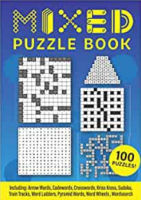
Mixed Puzzles Book |
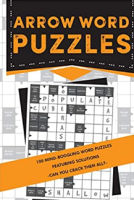
Arrow Word Puzzles |

Relaxing Dot to Dots |
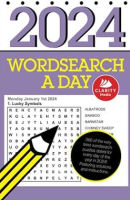
Wordsearch a Day 2024 |
Gift Ideas and Key Links
Popular Books: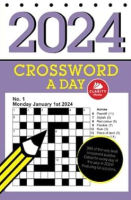
Crossword a Day 2024
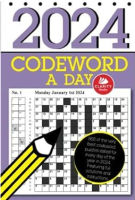
Codeword a Day 2024
Gift Ideas:
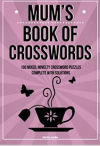
Mum's Book of Crosswords
Gift Ideas
Crossword Books
Codeword Books
Sudoku Books
Wordsearch Books
Brain Training
Kids Travel GamesDinosaur Puzzle Book
My first Word Search Book
Children's Fun Brain Training
Kids' Brain Training Puzzles
Colour By Number Maths
Kids' Number Kriss Kross
Children's Crosswords
Children's Codewords
Kids' Killer Sudoku
Under The Sea- Facts & Puzzles
Learning The Time
Children's Number Triangles
Children's Number Puzzles
Number Pyramids Puzzle Book
Mental Maths Book
Children's 6x6 Sudoku Book
Maths Squares Book
Gift Ideas 2020
Sudoku Puzzles
Christmas SudokuJigsawdoku Puzzle Book
Large Print Mixed Sudoku
16x16 Sudoku
25x25 Sudoku
12x12 Super Sudoku
Gigantic Sudoku
Mixed Sudoku
Fiendish Sudoku
Personalised Sudoku
Sudoku-London
Fillomino Puzzles
'X'mas Sudoku
Variety Sudoku
Valentine's Sudoku
Relaxing Sudoku
Sudoku a Day
Arrow Sudoku Book
Beginners 4x4 Sudoku Book
Calcudoku Book
Circle Sudoku Book
Consecutive Sudoku Book
Giant Sudoku Vol 1 & 2
Hypersudoku Book
Hidoku Book
Jigsaw Sudoku Vol 1 & 2
Killer Sudoku Vol 1 & 2
Killer Sudoku Large print
Large Print Sudoku Vol 1 & 2
Samurai Sudoku Vol 1 & 2
11 & 13 grid Samurai Sudoku
Sudoku 16x16 Vol 1 & 2
Sudoku 25x25 Sudoku Book
SuperSudoku 12x12 Book
Supreme Sudoku 15x15 Book
Sudoku X Book
Word Puzzles
Jumbo 20x20 Wordsearch PuzzlesLarge Print Arrow Word Puzzles
Kid's Word Fit Puzzles
Ultimate Crossword Mix
Bible Wordsearch Colouring
Giant Print Wordsearch
Word Definition Puzzles
Giant Print Crosswords
Word Trail Puzzles
Large Print Crosswords
Personalised Wordsearch
Large Print Kriss Kross
Kriss Kross Puzzles
Easy Themed Codewords Geography
Wordoku Puzzle Book
Large Print Wordsearch Book
Codewords Vol 1 & 2
Picture Wordsearch
Skeleton Crosswords Book
Word Ladders Book
Wordwheels Book
Logic / Number
Bridges PuzzlesNumber Fill Puzzles
Bathroom Mental Puzzles
Giant Kakuro
Magic Square Puzzles
ABC logic Puzzle Book
Battleships Book
Binary Puzzles Book
Binary Puzzles 12x12 Book
Large Print Code Words
Futoshiki
Hashi/Bridges Book
Kakuro Book
Minesweeper Puzzles Book
Number Cross Puzzle Book
Number Search Vol 1 & 2
Large Print Number Search Book
Number Squares Book
Sikaku Book
Simple Loop Book
Skeleton Crosswords vol 1 & 2
Space Maths Book
Puzzles For Your Pocket Books
Image / Visual
Dot-To-Dot:At The ZooUltimate Pets Adult Dot-to-dot
Large Print Adult Dot-to-dot
Adult Maze Puzzles-mixed
Kids' Maze Puzzles-mixed
Adult Dot-To-Dot
New Maze Puzzles
Children's Dot to Dots
Children's Maze Puzzles
Symbol Wordsearch Puzzles
COLOUR Hanjie Puzzle Book
Hanjie Puzzle Book
Perception Puzzles
Picture Mazes
Rebus Book
Summer Holiday Puzzle Book
Other Books
Sandwich SudokuKindness & Positivity Dot-To-Dot
Christmas Dot-To-Dot
Children's Personalised Birthday Story
Large Print Puzzle Book
Mother's Day Dot-To-Dot
The Gift Of Sudoku
Grandad's Quiz Book
Children's Halloween Puzzles
Dot-To-Dot Personalised
Calming Puzzles
Colouring Wordsearch
Sudoku and Crossword Diary 2017
Personalised Codeword
Personalised Wordsearch
Personalised Sudoku
Mother's & Father's Day Sudoku
Personalised Notebook
Notes & Puzzles
Grandad's Novelty Crosswords
Children's Notes & Puzzles
'X'mas Sudoku
Puzzle While You Wait
Grandad's Notes & Puzzles
Wedding Vow Renewal Puzzles
Grandad's Sudoku Puzzles
Easter Puzzles
St George's Day Puzzles
Mother's/Father's Day Puzzles
Valentine's Sudoku
Birthday Mixed Puzzles
Children's Personalised Book
Book of Christmas Puzzles
Personalised Family Puzzle Book
Birthday Sudoku Book
Occasion Books
Secret Santa Puzzle Book
Anniversary Sudoku Book
100 Simple Loop Puzzle Book
|
Welcome to this fantastic collection of 100 brand new simple loop puzzles!
The rules of the puzzle are simple: draw a single, continuous loop that visits every square in the puzzle grid just once. The loop cannot cross itself. This book contains puzzles at three different grid sizes: 6 x 6, 8 x 8 and 10 x 10. The larger puzzles may take a little longer to solve but the rules are the same. There are various tips and tricks that will help you solve these puzzles. Remember that the loop must enter and exit each square, so look for instances where there are only two neighbouring squares that can be visited by an empty square: the loop going through that square can be marked in directly. Also remember that the loop cannot close itself until it passes through every square in the grid, so if taking the loop in a certain direction would cause part of the loop to join itself prematurely or equally would isolate part of the loop then it cannot go in that direction. Good luck with the puzzles, and remember that they each have a single solution for you to discover.. If you would like to try a few of the puzzles before buying this book, please click the link below: The book of 100 Simple Loop Puzzles is available to purchase right now from Amazon.co.uk, Amazon.com and Amazon.eu. Please click the relevant link below to purchase this book via Amazon:
Tips on Solving Loop PuzzlesWhether you are solving fences / simple loop puzzles, or other common types of loop puzzles such as slitherlink and yajilin, there are several tips that it is worth considering to help you solve the puzzles. Whilst this guide focuses on simple loop, of course, some of these strategies will also apply to other loop puzzles too.The first tip is to look at the corners: in simple loop, you can fill these in straight away: there is only one entry and exit point for these squares, so you can fill in the path of the loop through them immediately. Also look at the edge squares, as there are a maximum of three options here, so often some of these can be marked straightaway. As a general solving rule, always look for squares where you can mark at least either the entry or exit square straightaway. In the first sample puzzle to the right, you can place both the entry and exit squares for cell five in row one: can you see how? Another tip is to remember that the loop can never close on itself - apart from to complete the puzzle when everything is placed. Otherwise there would be more than one loop in the puzzle, and that is not allowed. So again take a look at puzzle one, and the top right corner. You will place the loop such that the loop goes right in square five and down from square six into the equivalent squares on row two. Now you can use this rule: the loop could close on itself by squares five and six in row two joining together (to form a 2x2 loop): but you know that's forbidden by the rules - therefore you can mark a small 'x' between those two squares on row two so you know that connection is forbidden. Generally looking for instances where the loop would have to close on itself prematurely if it follows a certain direction is a useful rule when solving loop puzzles, including fences / simple loop puzzles. One more useful strategy tip for loop puzzles is to remember that you can't have an odd number of loop ends going into a closed section of the grid (where they must all connect up) - because doing so would lead to one section of the loop being isolated (clearly ends must join up in pairs - therefore an odd number would lead a loop section that couldn't join up, breaking the puzzle). Finally, from time to time you might find it useful to use 'if / then' logic, and look a step or two ahead: eg if the loop moves into this cell, will it cause any problems, or will the puzzle still be solvable? Only use this sort of logic if you can't find any other way to make progress. It will be required with some puzzles in this book (though all have a unique solution) but always at a manageable level only, you will only ever need to look a little bit ahead on up to a few occasions to solve these puzzles. We hope you find these tips useful - if you have any comments or ideas please do just let us know. |

|
William Shakespeare Quiz
In our new series of videos, you can learn about new puzzle types and take part in quizzes. Why not have a watch?How much do you know about the Bard? It's time to find out with this fun quiz that contains 20 questions about the life and times of William Shakespeare...
For individuals with comments, questions or ideas with regard to our puzzle books, then please use this Contact Form to drop us a line.
